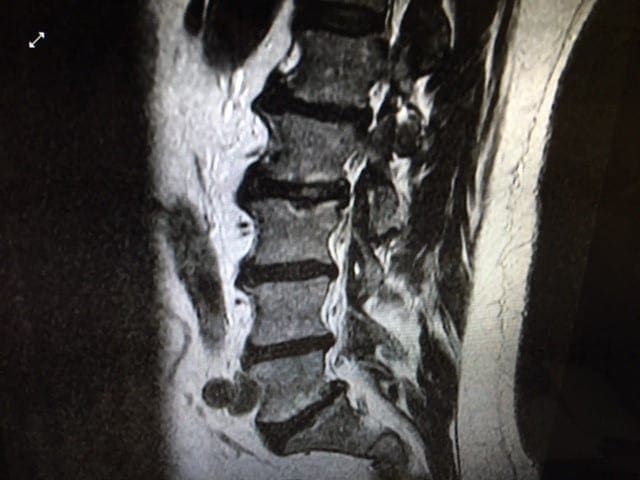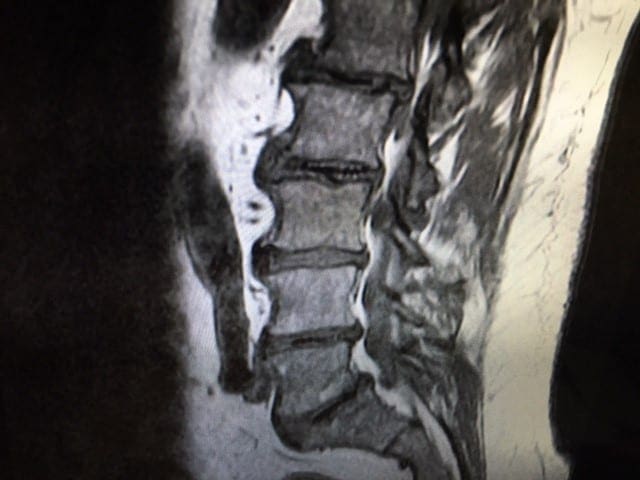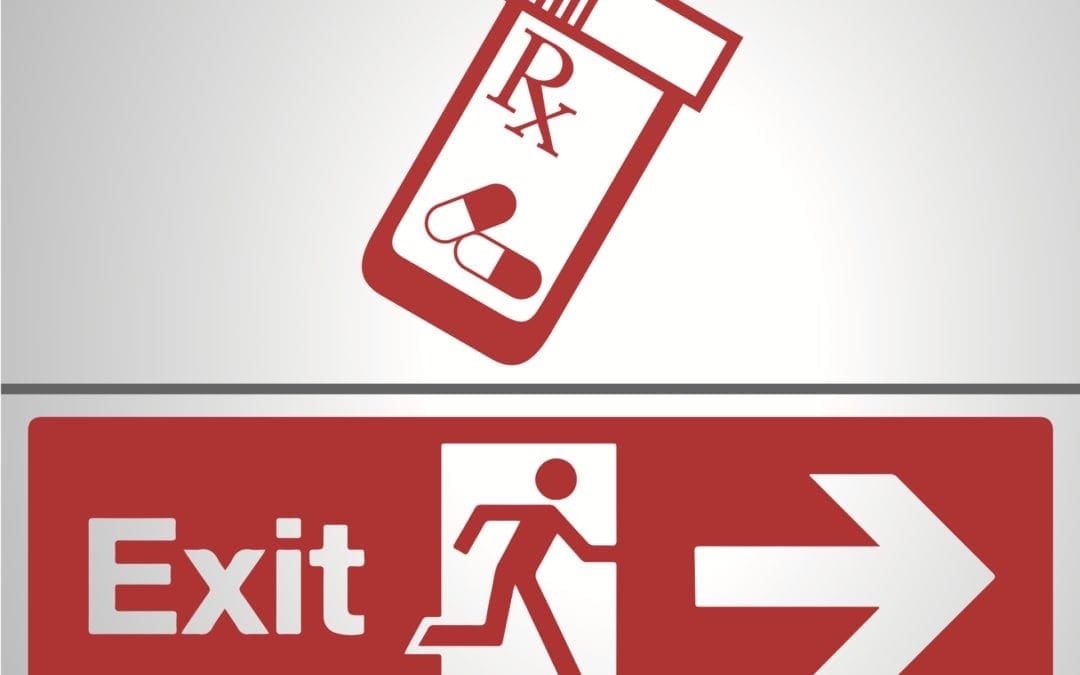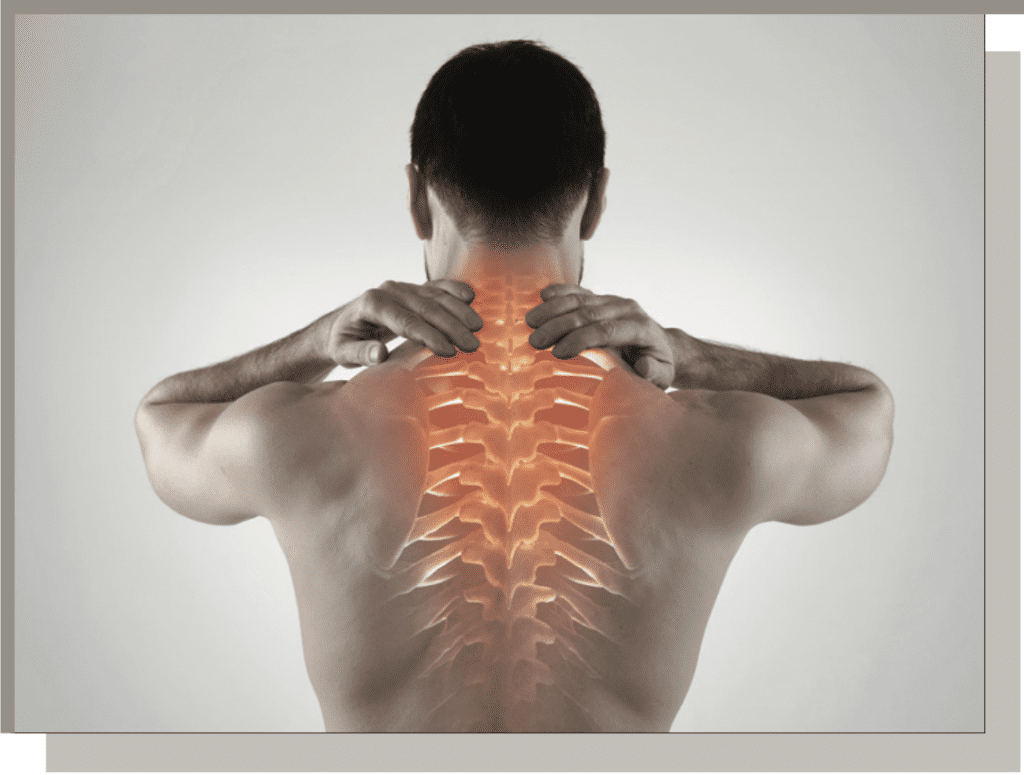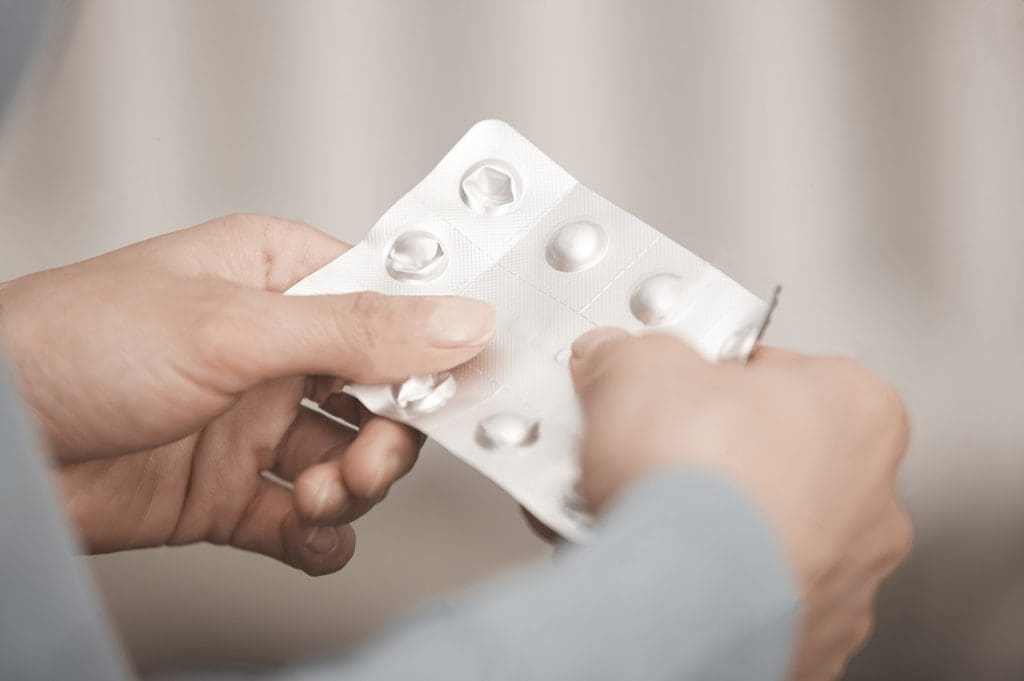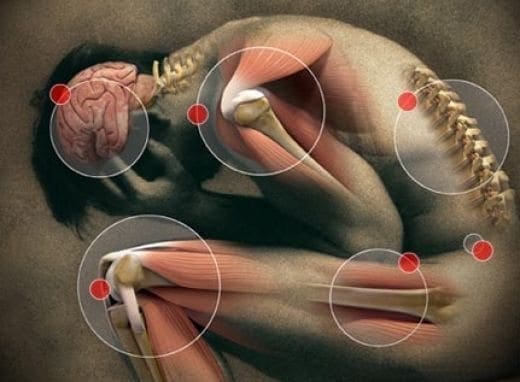End Notes
1 Ingraham, Christopher; Heroin deaths surpass gun homicides for the first time, CDC data shows. Washington Post, December
8, 2016. https://www.washingtonpost.com/news/wonk/wp/2016/12/08/heroin-deaths-surpass-gun-homicides-for-thefirst-time-cdc-data-show/?utm_term=.38c3d6096d4d;
accessed December 8, 2016.
2 Ronan, M. V., & Herzig, S. J. (2016). Hospitalizations Related To Opioid Abuse/Dependence And Associated Serious Infections
Increased Sharply, 2002�12. Health Affairs, 35(5), 832-837. doi:10.1377/hlthaff.2015.1424.
3 J Manag Care Spec Pharm. [Published online January 3, 2017].Academy of Managed Care Pharmacy.
http://www.jmcp.org/doi/pdf/10.18553/jmcp.2017.16265.
4 Dallas, Mary Elizabeth; Opoid Epidemic Costs U.S. $78.5 Billion Annually; HealthDay, September 21, 2016.
https://consumer.healthday.com/bone-and-joint-information-4/opioids-990/opioid-epidemic-costs-u-s-78-5-billion-annually-cdc-714931.html.
5 Comprehensive Addiction and Recovery Act (CARA);
http://www.cadca.org/comprehensive-addiction-and-recovery-act-cara.
6 DeBonis, Mike; 21st Century Cures Act, boosting research and easing drug approvals; Washington Post, December 8, 2016;
https://www.washingtonpost.com/news/powerpost/wp/2016/12/07/congress-passes-21st-century-cures-act-boostingresearch-and-easing-drug-approvals/?utm_term=.53351c0273f5&wpisrc=nl_sb_smartbrief
7 Hiltzik, Michael; The 21st Century Cures Act; LA Times, January 5, 2017. http://www.latimes.com/business/hiltzik/la-fi-hiltzik-
21st-century-20161205-story.html
8 U.S. Surgeon General Declares War on Addiction; Medline Plus, November 17, 2016;
https://medlineplus.gov/news/fullstory_162081.html; accessed December 7, 2016.
9 Obama Administration announces Prescription Opioid and Heroin Epidemic Awareness Week; Proclamation by
President Obama, September 16, 2016. https://www.whitehouse.gov/the-press-office/2016/09/19/fact-sheet-obama-administration-announces-prescription-opioid-and-heroin
10 Obama Administration announces Prescription Opioid and Heroin Epidemic Awareness Week, 2016
11 Shedrofsky, Karma; Drug czar: Doctors, drugmakers share blame for opioid epidemic; USA Today, July 7, 2016; http://
www.usatoday.com/story/news/2016/07/06/drug-czar-doctors-drugmakers-share-blame-opioid-epidemic/86774468/;
accessed January 1, 2017.
12 Pallarito, Karen; Rising Price of Opioid OD Antidote Could Cost Lives: Study; Health Day News, December 8, 2016. https://
consumer.healthday.com/bone-and-joint-information-4/opioids-990/rising-price-of-opioid-od-antidote-could-costlives-717589.html;
accessed December 8, 2016.
13 Gupta, R., Shah, N. D., & Ross, J. S. (2016). The Rising Price of Naloxone � Risks to Efforts to Stem Overdose Deaths. New
England Journal of Medicine, 375(23), 2213-2215. doi:10.1056/nejmp1609578
14 Cha, Ariana Eunjung; The drug industry�s answer to opioid addiction: More pills, October 16, 2016;
https://www.washingtonpost.com/national/the-drug-industrys-answer-to-opioid-addiction-morepills/2016/10/15/181a529c-8ae4-11e6-bff0-d53f592f176e_story.html?utm_term=.1e48b2598deb;
accessed December 8, 2016.
15 Cha, Ariana Eunjung, 2016.
16 Shedrrofsky, Karma, 2016.
17 America�s Painkiller Epidemic, Explained; The Week, February 13, 2016;
http://theweek.com/articles/605224/americas-painkiller-epidemic-explained
18 Wing, Nick; DEA Is Cutting Production Of Prescription Opioids By 25 Percent In 2017; Huffington Post, October 5, 2016;
http://www.huffingtonpost.com/entry/dea-cutting-prescription-opioids_us_57f50078e4b03254526297bd
19 Mulvihill, Geoff, Whyte, Liz Essley, Wieder, Ben; Politics of pain: Drugmakers fought state opioid limits amid crisis; The Center
for Public Inegrity, December 15, 2016. https://www.publicintegrity.org/2016/09/18/20200/politics-pain-drugmakersfought-state-opioid-limits-amid-crisis;
accessed December 20, 2016.
20 Himani, A, Manohar S., Reddy, Gopal N., Supriya, P.; COMPARISON OF EFFICACY OF BUTORPHANOL AND FENTANYL AS INTRATHECAL
ADJUVANT TO BUPIVACAINE, Journal of Evolution of Medical and Dental Sciences;
https://jemds.com/latest-articles.php?at_id=7552; accessed December 31, 2016.
21 CDC: 10 Most Dangerous Drugs Linked to Overdose Deaths, Health Day, December 22, 2016. http://www.empr.com/
news/cdc-10-most-dangerous-drugs-linked-to-overdose-deaths/article/580540/; accessed January 1, 2017.
22 Mulvihill et.al.., 2016.
23 Mulvihill et.al.., 2016.
24 Mulvihill, et. al., 2016.
25 Cha, Ariana Eunjung, 2016.
26 Cha, Ariana Eunjung, 2016.
�2017 Foundation for Chiropractic Progress PAGE 27
27 Centers for Disease Control and Prevention. Web-based Injury Statistics Query and Reporting System (WISQARS). 2014
(http://www.cdc.gov/injury/wisqars/fatal.html).
28 Thompson, Dennis; Drug Overdose Deaths Climb Dramatically in U.S.; HealthDay News, December 20, 2016;
https://consumer.healthday.com/bone-and-joint-information-4/opioids-990/drug-overdose-deaths-climb-dramatically-inu-s-717988.html;
accessed December 23, 2016.
29 Bernstein, Lenny; Crites, Alice, Higham, Scott, and Rich, Steven; Drug industry hired dozens of officials from the DEA as
the agency tried to curb opioid abuse; The Washington Post, December 22, 2016; https://www.washingtonpost.com/
investigations/key-officials-switch-sides-from-dea-to-pharmaceutical-industry/2016/12/22/55d2e938-c07b-11e6-b527-
949c5893595e_story.html.
30 Siegel, Marc, MD; We doctors are enablers: A physician�s take on the opioid epidemic; FOXNews, December 21, 2016;
http://www.foxnews.com/opinion/2016/12/21/doctors-are-enablers-physicians-take-on-opioid-epidemic.html;
accessed January 4, 2017.
31 Freyer, Felice J.; Doctors are cutting opioids, even if it harms patients; Boston Globe, January 3, 2017;
https://www.bostonglobe.com/metro/2017/01/02/doctors-curtail-opioids-but-many-see-harm-pain-patients/z4Ci68TePafcD9AcORs04J/story.html.
32 Blair, Nolan; Doctors prescribing less opioids; ABC WBAY.com, November 2, 2016.
http://wbay.com/2016/11/02/report-finds-decrease-in-opioid-prescriptions/
33 Centers for Disease Control; https://www.cdc.gov/drugoverdose/pdmp/; accessed January 5, 2017.
34 Lord, Rich; Attention to opioids may be curbing doctors prescriptions; Pittsburgh Post-Gazette, December 26, 2016; http://
www.post-gazette.com/news/overdosed/2016/12/26/Attention-to-opioids-may-be-curbing-doctors-prescriptions/stories/201612260013
35 Nuzum, Lydia; Opioid prescriptions in US, WV down for first time in two decades; The Charleston Gazette-Mail, June 6, 2016.
http://www.wvha.org/Media/NewsScan/2016/June/6-6-16-Opioid-prescriptions-in-US,-WV-down-for-fir.aspx
36 Freyer, Felice J.; Opioid prescriptions drop among patients covered by state�s biggest insurer; Boston Globe, October 20,
2016; https://www.bostonglobe.com/metro/2016/10/20/opioid-prescriptions-drop-significantly-among-patients-covered-state-biggest-insurer/06jIYorfogaG2o8Wrhr8ZN/story.html
37 Freyer, Felice J., 2016.
38 U.S. Agency for Healthcare Research and Quality, Opioid Overdoses Burden U.S. Hospitals: Report, HealthDay News, December
15, 2016. https://consumer.healthday.com/public-health-information-30/heroin-news-755/opioid-overdoses-taketoll-on-u-s-hospitals-717872.html;
accessed December 16, 2016.
39 Reddy, S. (2017, February 13). No Drugs for Back Pain, New Guidelines Say. Retrieved from
https://www.wsj.com/articles/no-drugs-for-back-pain-new-guidelines-say-1487024168
40 Institute of Medicine Report from the Committee on Advancing Pain Research, Care, and Education: Relieving Pain in
America, A Blueprint for Transforming Prevention, Care, Education and Research. The National Academies Press, 2011.
http://books.nap.edu/openbook.php?record_id=13172&page=1.
41 American Association of Neurological Surgeons; Low Back Pain, May 2016. http://www.aans.org/Patientpercent20Information/Conditionspercent20andpercent20Treatments/Lowpercent20Backpercent20Pain.aspx
42 American Academy of Pain Medicine; Facts and Figures About Pain;
http://www.painmed.org/PatientCenter/Facts_on_Pain.aspx#refer; accessed January 7, 2017.
43 Daniel C. Cherkin, Robert D. Mootz; Chiropractic in the United States: Training, Practice, and Research, 2010.
Chiropractic in the United States: Training, Practice, and Research�; accessed January 17, 2017.
44 Wong, J. J., Shearer, H. M., Mior, S., Jacobs, C., C�t�, P., Randhawa, K., . . . Taylor-Vaisey, A. (2016). Are manual therapies, passive
physical modalities, or acupuncture effective for the management of patients with whiplash-associated disorders or
neck pain and associated disorders? An update of the Bone and Joint Decade Task Force on Neck Pain and Its Associated
Disorders by the OPTIMa collaboration. The Spine Journal, 16(12), 1598-1630. doi:10.1016/j.spinee.2015.08.024.
45 Spinal Manipulation for Low-Back Pain. (2016, April 20). Retrieved January 17, 2017, from
https://nccih.nih.gov/health/pain/spinemanipulation.htm.
46 Wong, J., C�t�, P., Sutton, D., Randhawa, K., Yu, H., Varatharajan, S., . . . Taylor-Vaisey, A. (2016). Clinical practice guidelines for
the noninvasive management of low back pain: A systematic review by the Ontario Protocol for Traffic Injury Management
(OPTIMa) Collaboration. European Journal of Pain, 21(2), 201-216. doi:10.1002/ejp.931
47 Doctor, Jason, October 4, 2016.
48 Goodrich, Kate, MD; Agrawal, Shantanu, MD; The CMS Blog; Addressing the Opioid Epidemic: Keeping Medicare and Medicaid
Beneficiaries Healthy, January 5, 2017; https://blog.cms.gov/2017/01/05/addressing-the-opioid-epidemic/
49 Deyo RA, Mirza SK, Martin BI. Back pain prevalence and visit rates: estimates from U.S. national surveys, 2002. Spine.
2006;31(23):2724�7. doi:10.1097/01.brs.0000244618.06877.cd
PAGE 28 �2017 Foundation for Chiropractic Progress
CHIROPRACTIC � A KEY TO AMERICA’S OPIOID EXIT STRATEGY
50 Bureau of Labor Statistics; Nonfatal Occupational Injuries and Illnesses Requiring Days Away From Work, 2015,
November 10, 2016; https://www.bls.gov/news.release/osh2.nr0.htm; accessed January 8, 2017.
51 Lawlor, Joe; Back injuries most common type of injuries for workers; Portland Press Herald, October 16, 2016; http://www.
pressherald.com/2016/10/16/back-injuries-most-common-type-of-injuries-for-workers/; accessed 1.8.2017.
52 Lawlor, Joe; 2016.
53 Lawlor, Joe; 2016.
54 Blanchette, MA., Rivard, M., Dionne, C.E. et al. J Occup Rehabil (2016). doi:10.1007/s10926-016-9667-9;
http://link.springer.com/article/10.1007/s10926-016-9667-9.
55 Keeney BJ, et al. Early predictors of lumbar spine surgery after occupational back injury: results from a prospective study
of workers in Washington State. Spine 2013 May 15;38(11):953-64.
6 Dorr, Hannah and Townley, Charles; Chronic Pain Management Therapies in Medicaid: Policy Considerations for Non-Pharmacological
Alternatives to Opioids; National Academy for State Health Policy, September 2, 2016;
http://nashp.org/chronic-pain-management-therapies-medicaid-policy-considerations-non-pharmacological-alternatives-opioids/
57 It is important to note that the KFF data tracks which states allow direct reimbursement to the specific provider type (e.g.,
directly reimbursing a physical therapist for physical therapy services); states that do not directly reimburse these providers
may actually cover the service if billed by another provider (e.g., an institutional setting). For more information, please
see the notes in the following references.
Kaiser Family Foundation. �Medicaid Benefits: Physical Therapy Services.� Retrieved August 24, 2016.
http://kff.org/medicaid/state-indicator/physical-therapy-services/
Kaiser Family Foundation. �Medicaid Benefits: Psychologist Services.� Retrieved August 24, 2016.
http://kff.org/medicaid/state-indicator/psychologist-services/
Kaiser Family Foundation. �Medicaid Benefits: Occupational Therapy Services.� Retrieved August 24, 2016.http://
kff.org/medicaid/state-indicator/occupational-therapy-services/
Kaiser Family Foundation. �Medicaid Benefits: Chiropractor Services.� Retrieved August 24, 2016.
http://kff.org/medicaid/state-indicator/chiropractor-services/
58 Dagenais, S., Brady, O., Haldeman, S., & Manga, P. 2015, October 19. A systematic review comparing the costs of
chiropractic care to other interventions for spine pain in the United States. Retrieved February 08, 2017, from
https://www.ncbi.nlm.nih.gov/pmc/articles/PMC4615617/
59 Neighborhood Health Plan of Rhode Island Clinical Practice Guideline, Complementary and Alternative Medicine (CAM).
December 18, 2014.
60 U.S. National Institutes of Health; Assessment of Chiropractic Treatment for Low Back Pain and Smoking Cessation in Military
Active Duty Personnel; https://clinicaltrials.gov/ct2/show/NCT01692275; accessed January 8, 2017.
61 U.S. National Institutes of Health
62 Goertz, Christine M. DC, PhD, et. al; Adding Chiropractic Manipulative Therapy to Standard Medical Care for Patients With
Acute Low Back Pain: Results of a Pragmatic Randomized Comparative Effectiveness Study; SPINE, Volume 38, Issue 8,
April 15, 2013; http://journals.lww.com/spinejournal/Abstract/2013/04150/Adding_Chiropractic_Manipulative_Therapy_to.2.aspx
63 Dowell D, Haegerich TM, Chou R. CDC Guideline for Prescribing Opioids for Chronic Pain � United States, 2016. MMWR
Recomm Rep 2016;65(No. RR-1):1�49. DOI: http://dx.doi.org/10.15585/mmwr.rr6501e1.
64 CBS News/AP. (2016, March 15). CDC guidelines aim to reduce epidemic of opioid painkiller abuse. Retrieved January 15,
2017, from http://www.cbsnews.com/news/opioid-painkiller-guidelines/.
Foundation For Chiropractic Progress�
BOARD OF DIRECTORS
Kent S. Greenawalt, CEO, Foot Levelers; Chairman of the Board of Directors, F4CP
Mickey G. Burt, DC, Executive Director of Alumni and Development, Palmer College of Chiropractic Gerard W. Clum, DC, Director, The Octagon, Life University
Kristine L. Dowell, Executive Director, Michigan Association of Chiropractors
Joe Doyle, Publisher, Chiropractic Economics
Charles C. Dubois, President/CEO, Standard Process, Inc.
J. Michael Flynn, DC
R. A. Foxworth, DC, FICC, MCS-P, President, ChiroHealthUSA
Arlan W. Fuhr, Chairman/Founder, Activator Methods International Ltd.
Greg Harris, Vice President for University Advancement, Life University
Kray Kibler, CEO, ScripHessco
Thomas M. Klapp, DC, COCSA Representative
Carol Ann Malizia, DC, CAM Integrative Consulting
Fabrizio Mancini, DC, President Emeritus, Parker University
Brian McAulay, DC, PhD
William Meeker, DC, MPH, President, Palmer College of Chiropractic � San Jose Campus
Robert Moberg, CEO, Chirotouch
Donald M. Petersen, Jr., Publisher, MPA Media
Mark Sanna, DC, FICC, ACRB, Level II, President, Breakthrough Coaching
Paul Timko, Vice President/General Manager of U.S. Clinical Business, Performance Health


